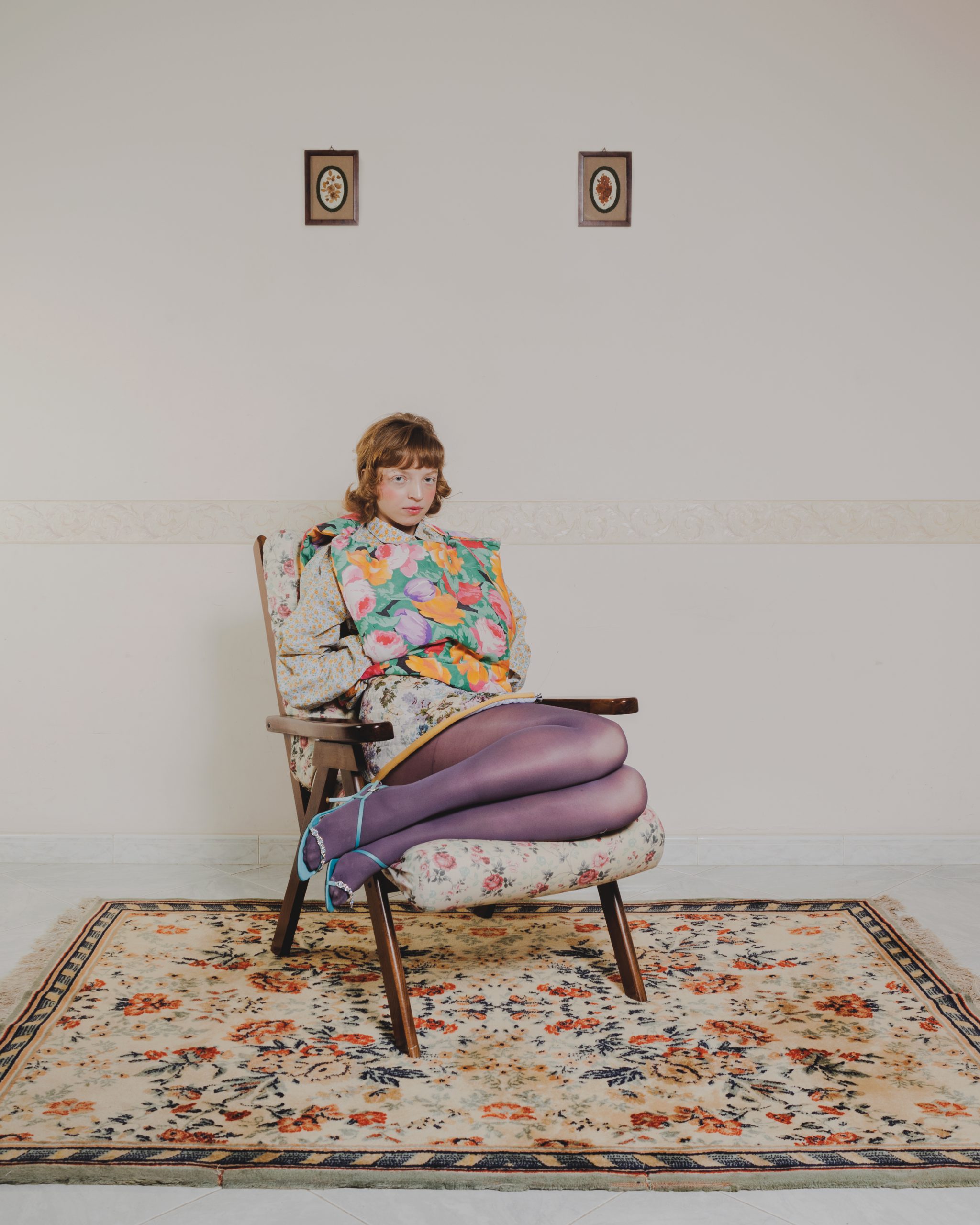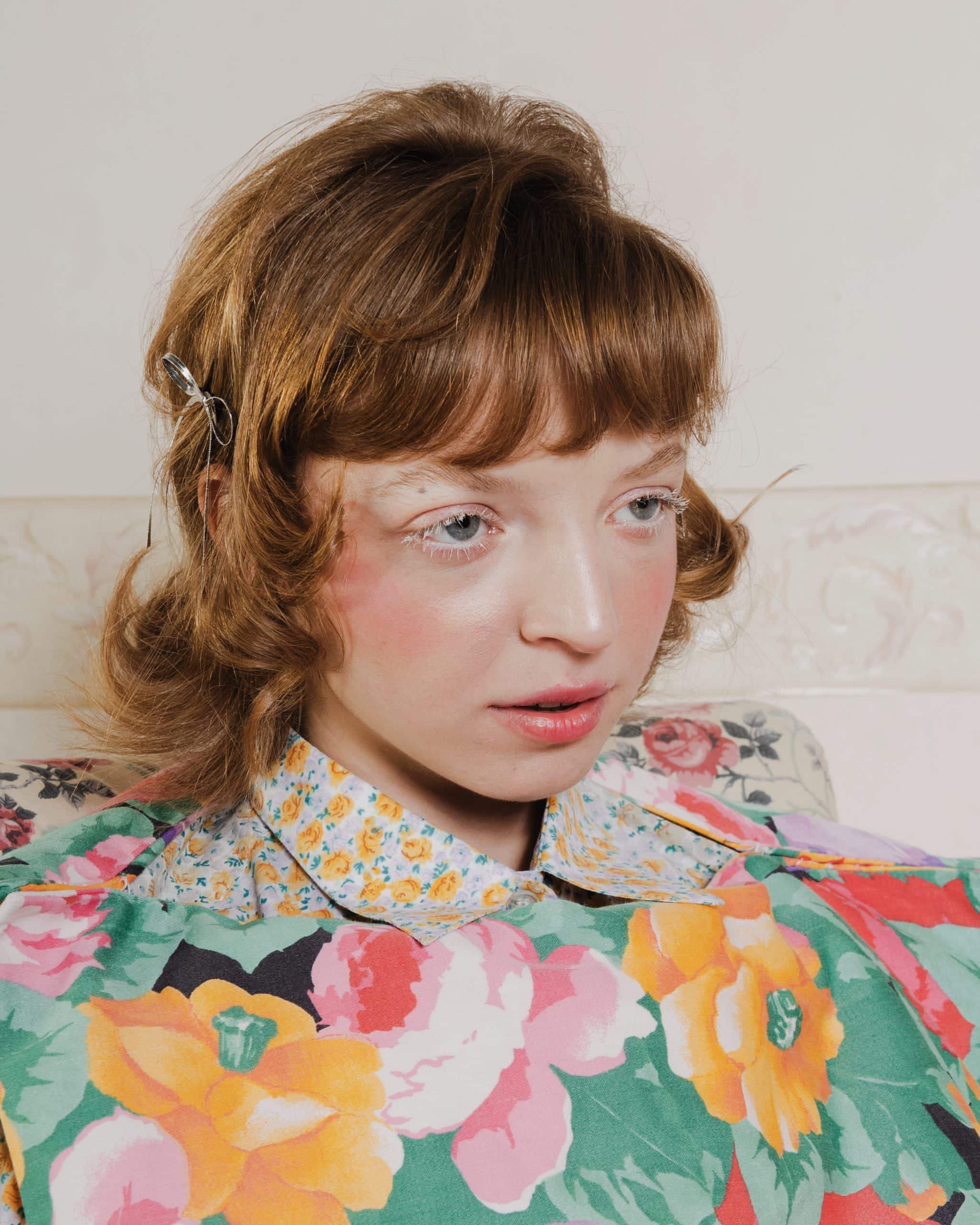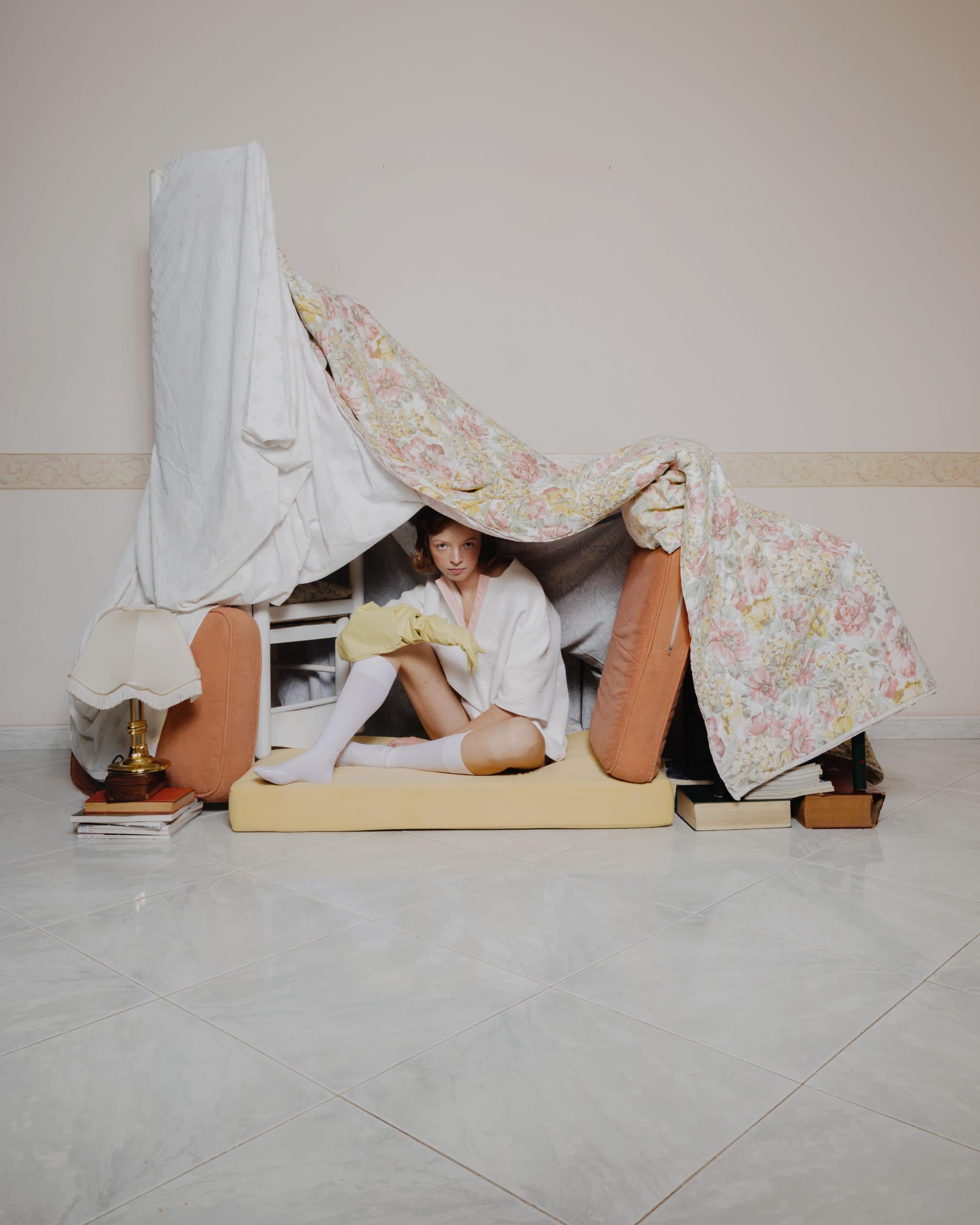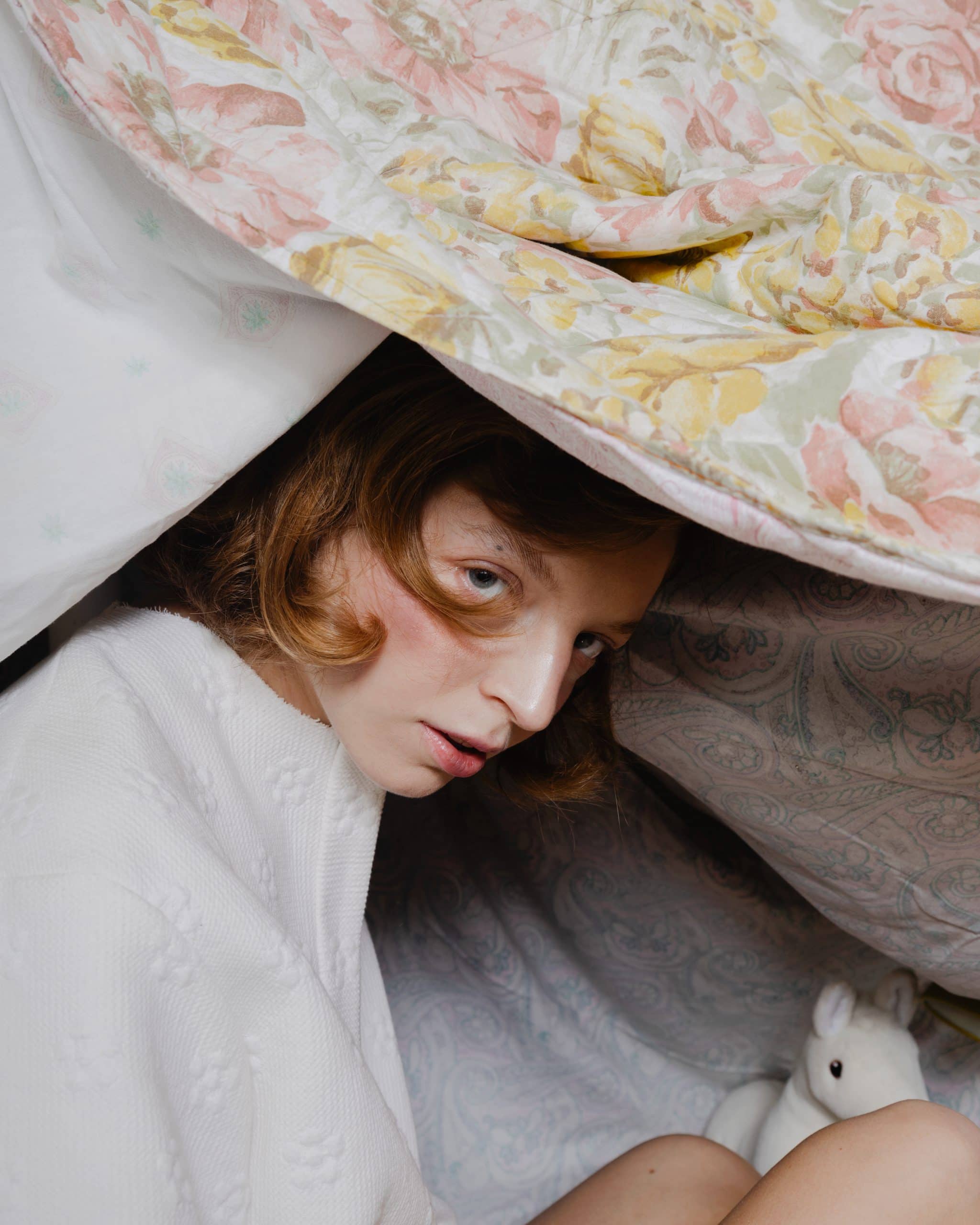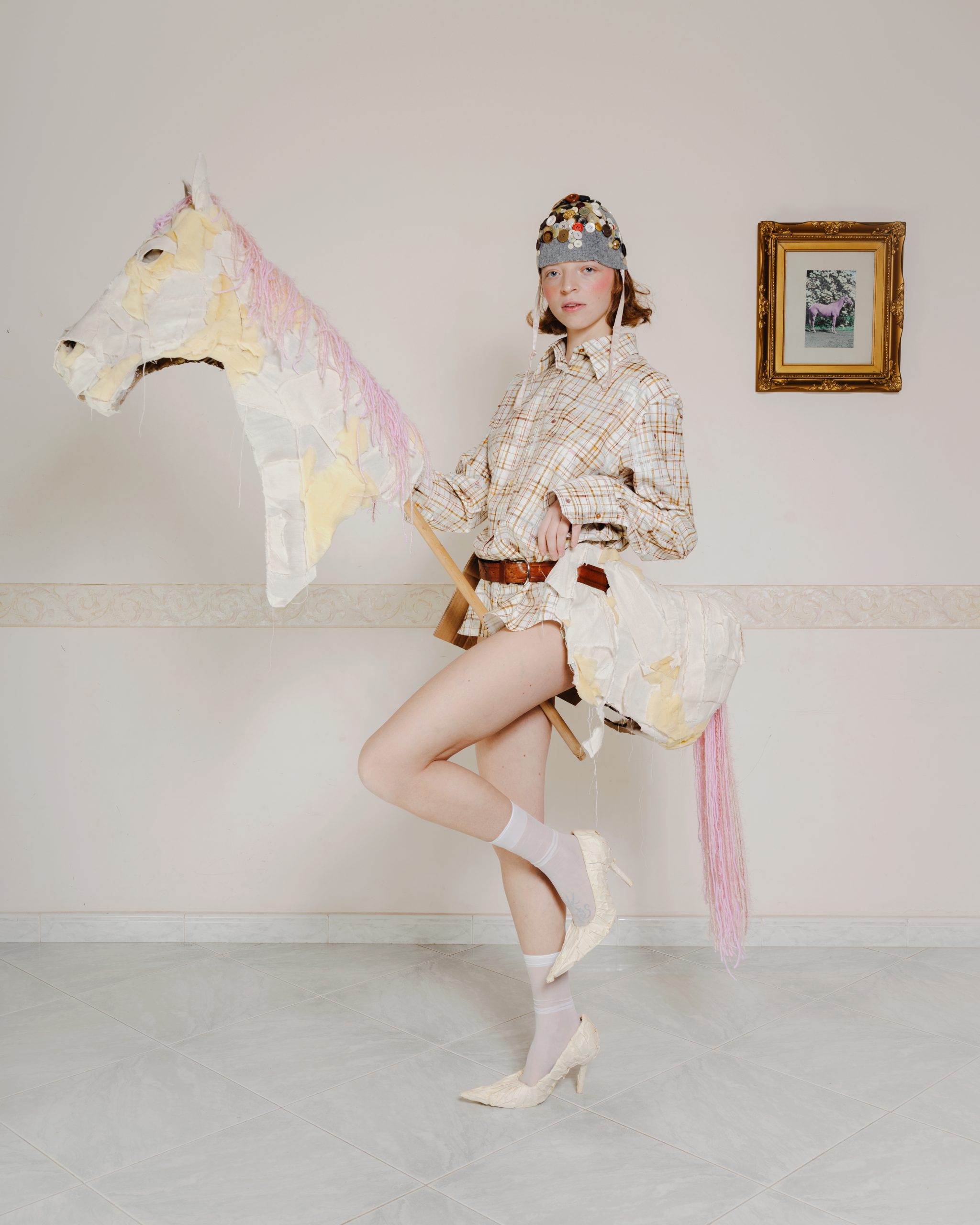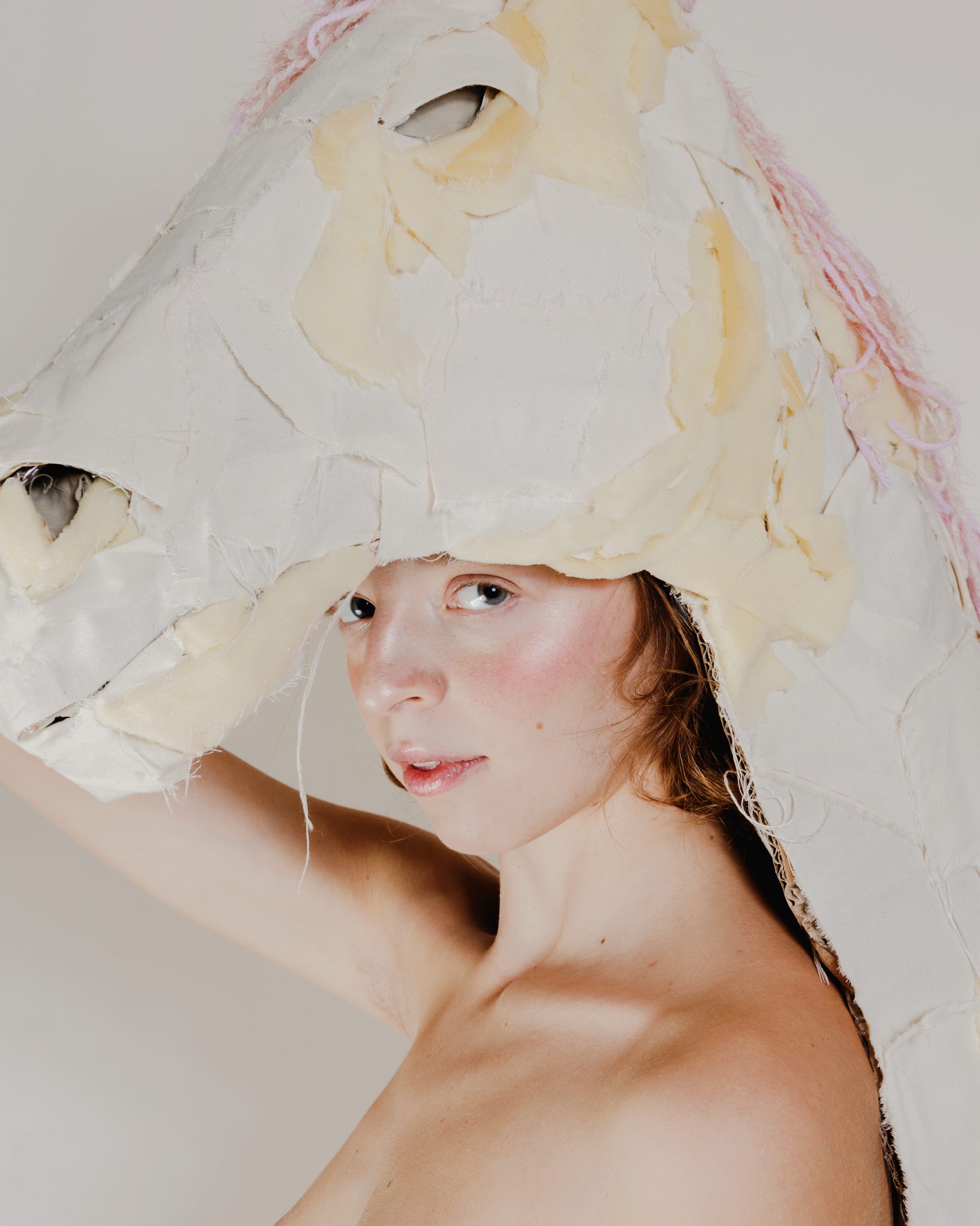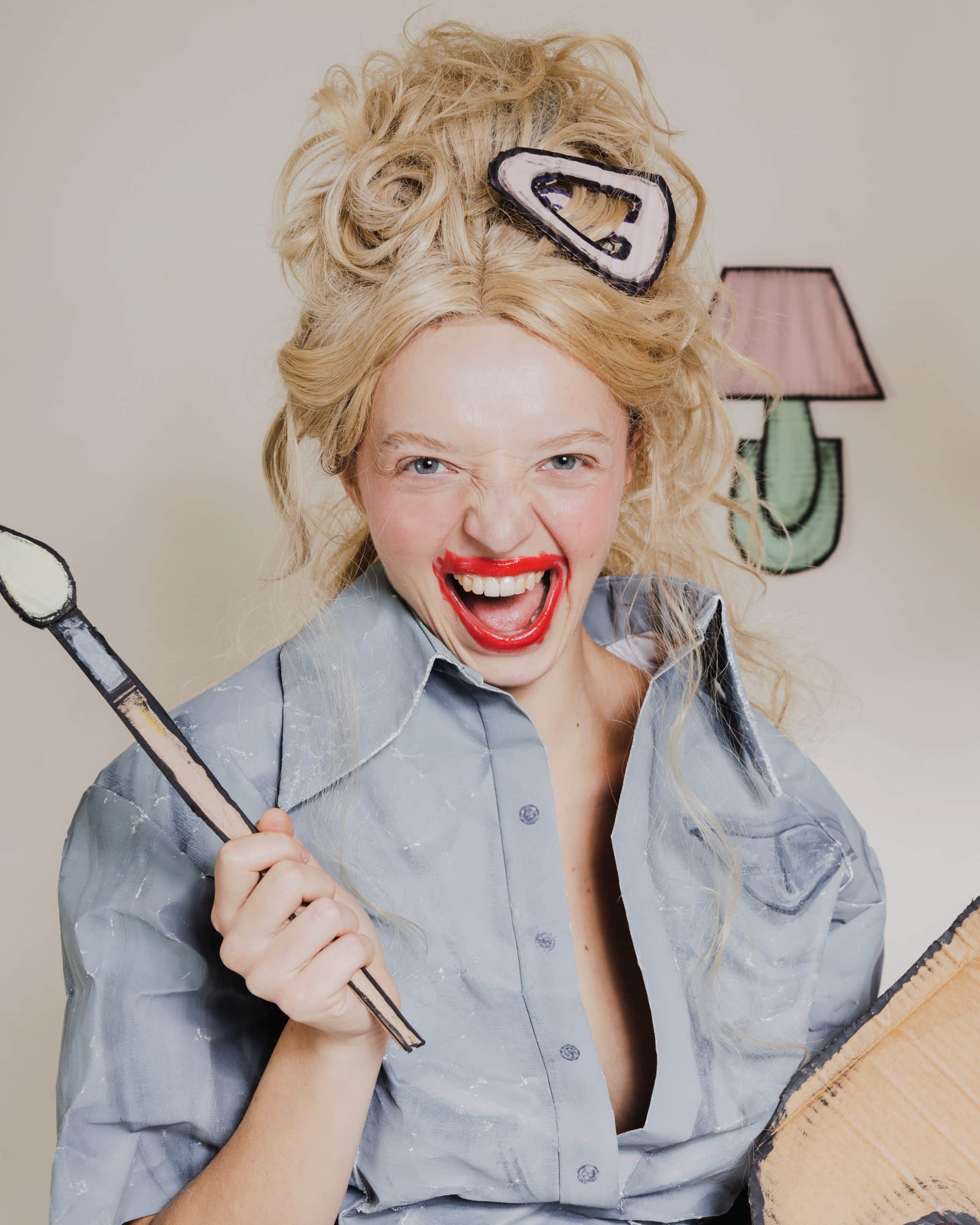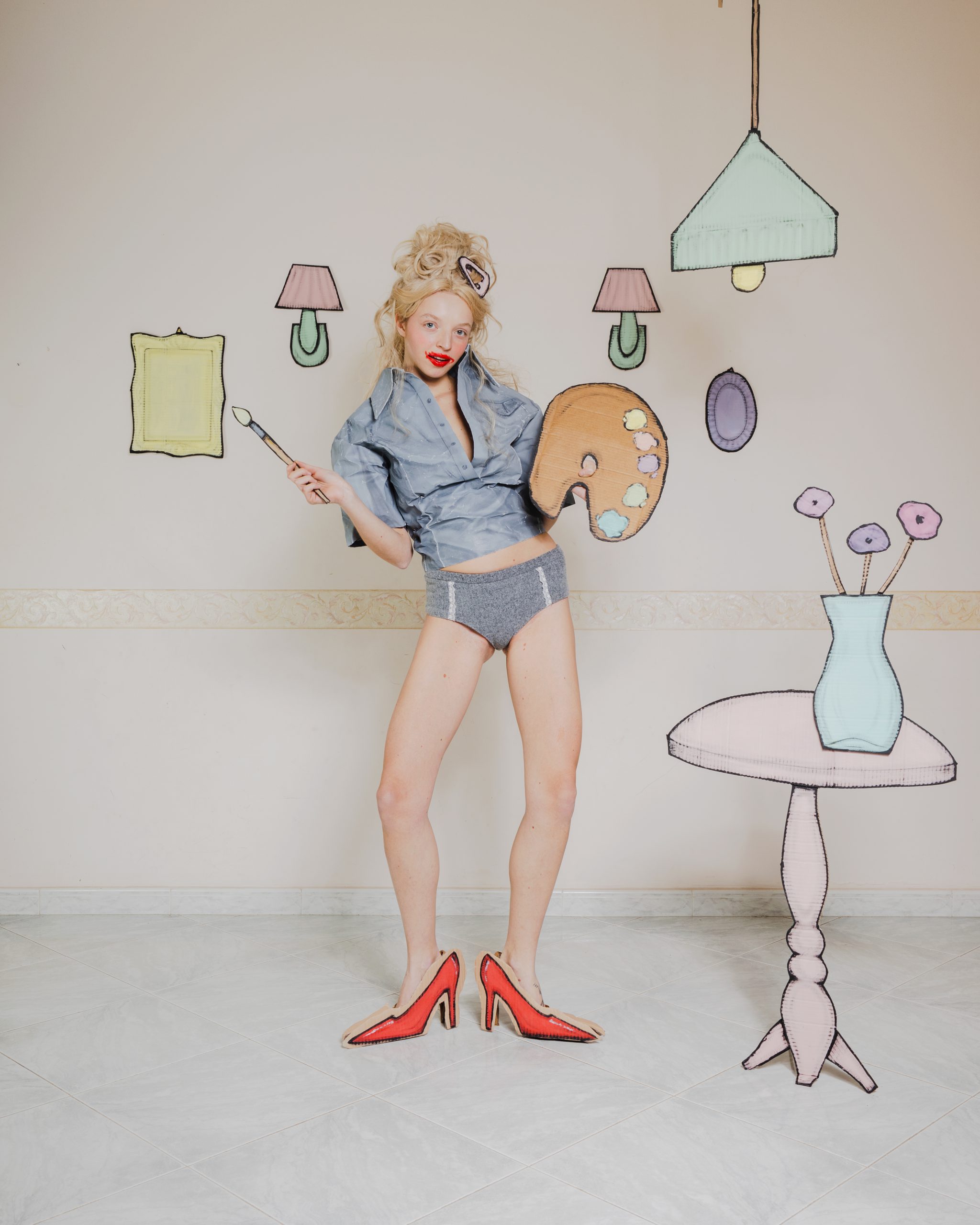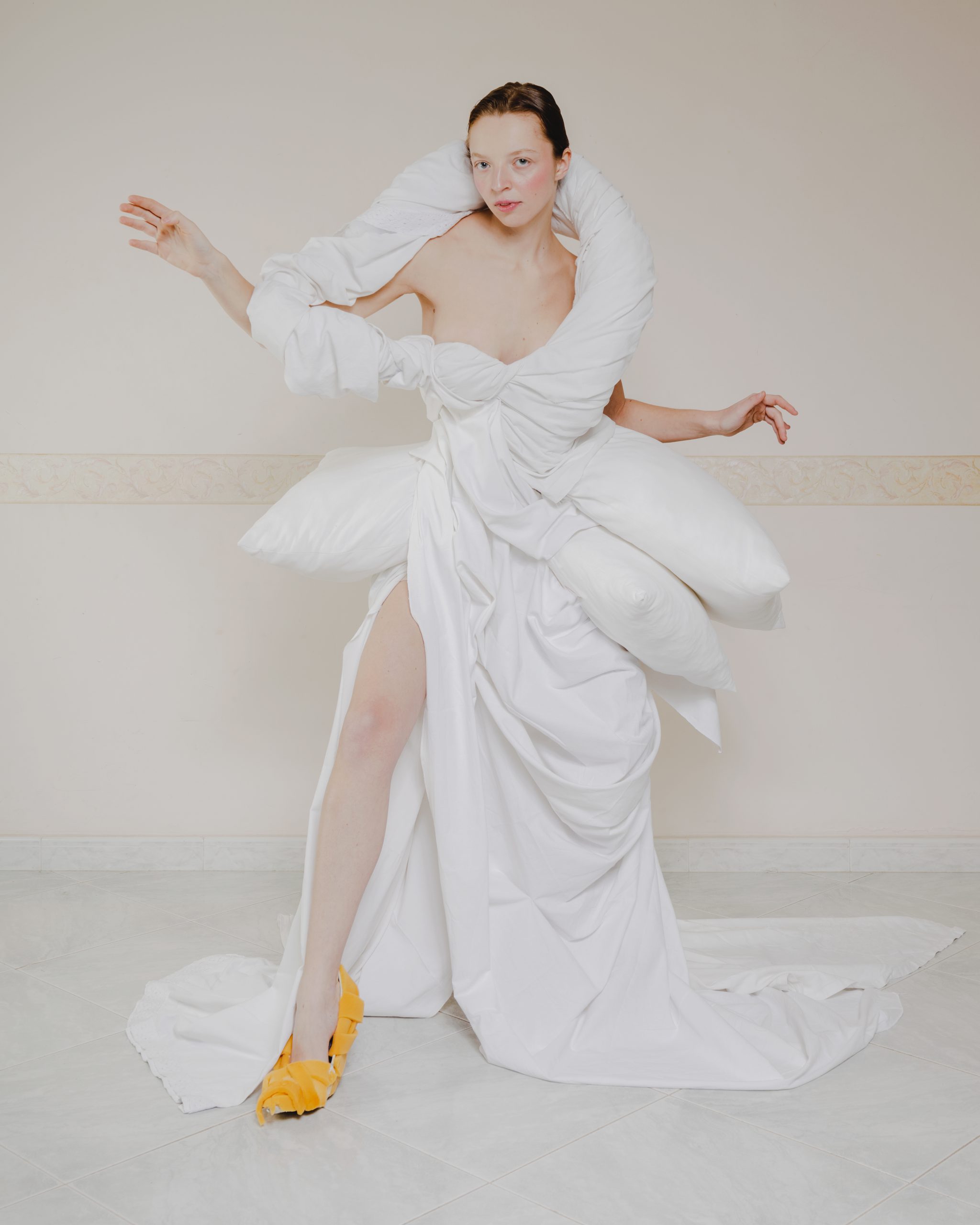She was once a little girl. Within the walls of her home, she laughed, cried, felt small and enormous all at once. There, she played at becoming someone she hadn’t yet grown into—building and dismantling imaginary worlds to escape or confront reality. Now, as an adult, she returns to that space with new eyes, carrying imprints of past games and experiences still alive within her.
Memory takes up space. It is heavy, tangible—a clutter we don’t want to clear. It becomes an archetypal trace of a life chapter that never truly ends. The physical footprint of childhood play transforms into a visual metaphor for growth. A living room corner, a horse painting, a cardboard table, a heap of cushions—fragments of a memory that the subject re-inhabits with irony and nostalgia.
Echoing the work of Luigi Ontani, this visual narrative unfolds as a series of tableaux vivants—staged “paintings” of imaginary play. The home becomes a stage. The subject wears the space, dresses in memories and games, and transforms into a living monument—a sculptural self in search of identity through memory.
The story, embodied by the grown-up child, is surreal and dreamlike. It underscores the tension between childhood and adulthood, inviting reflection on play—too often neglected with age.
Each tableau reactivates a game that once served as an escape. Now, in an adult body, she hasn’t lost the impulse to play. The result is a visual meditation on *monumentum* as memory and inheritance—a blend of nostalgia and lightness, where the past becomes affectionately intrusive and unexpectedly ironic.
